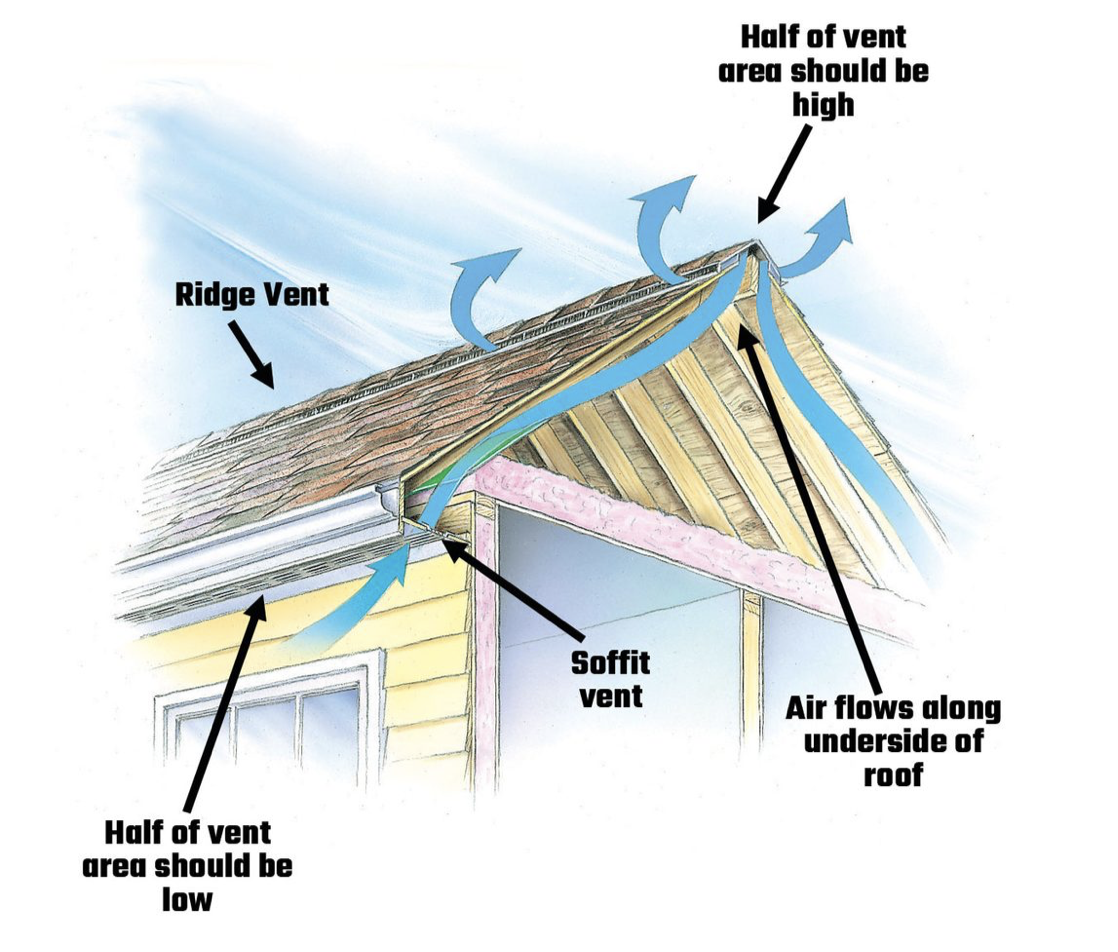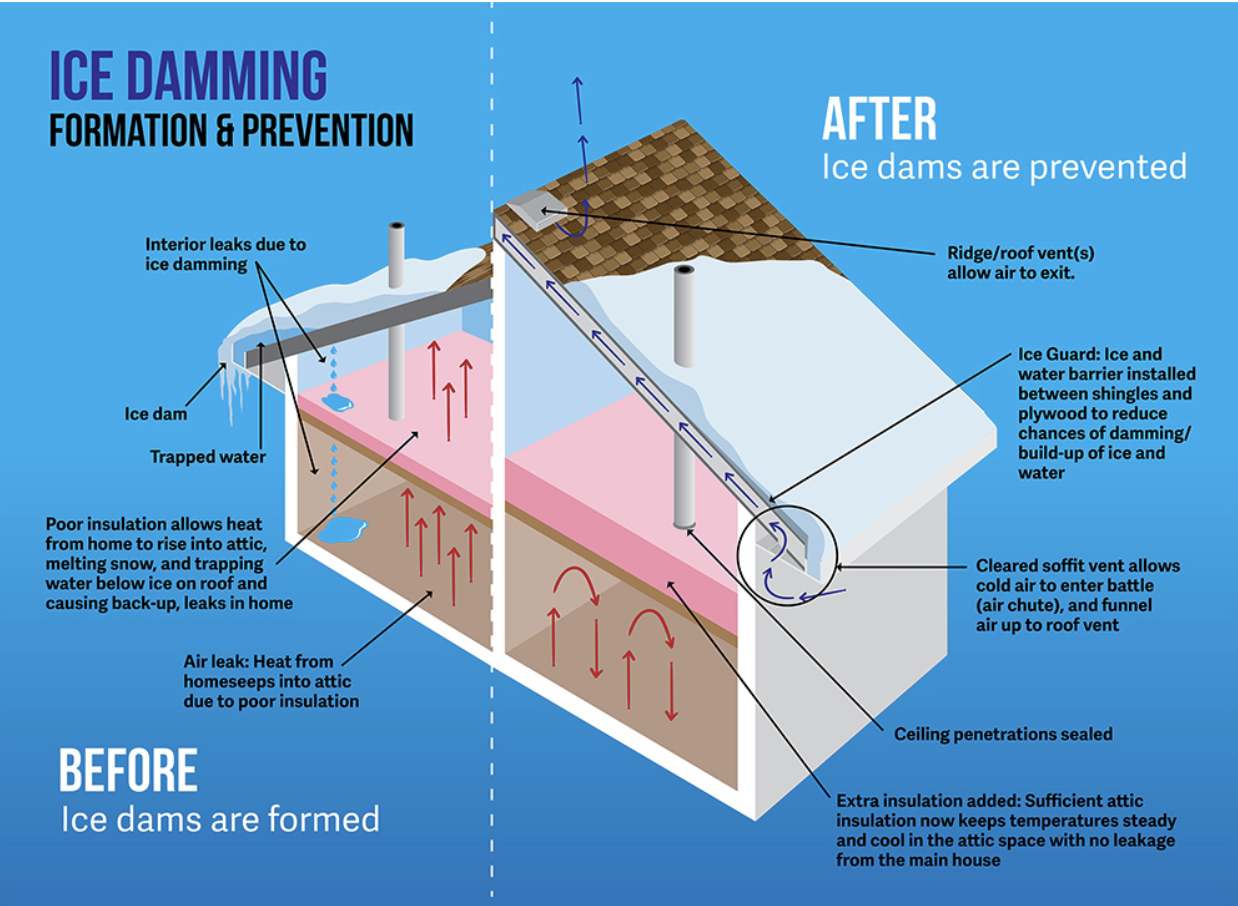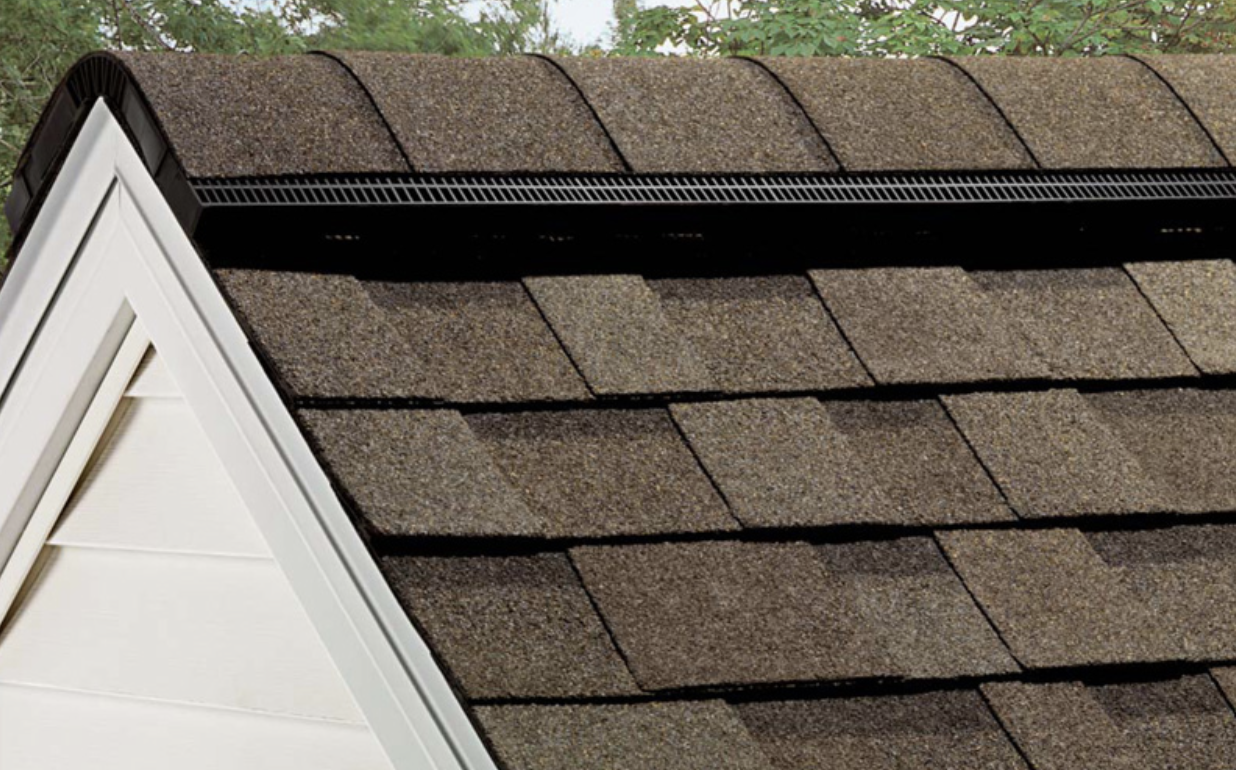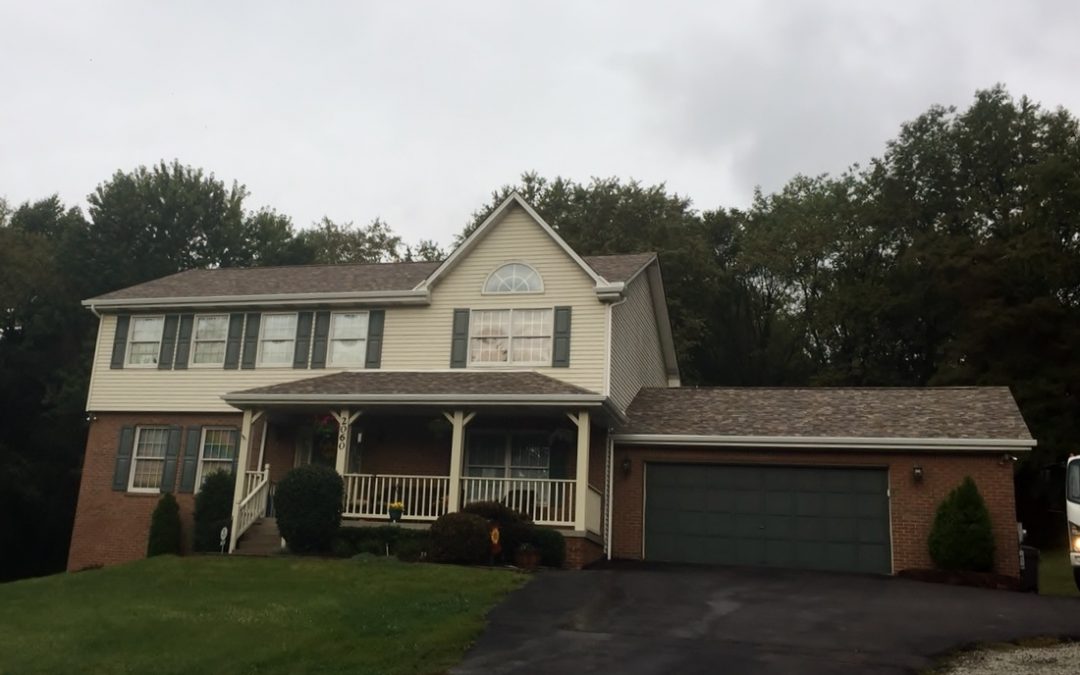Introduction
Pittsburgh weather hides a silent threat: moisture trapped in your attic. This weakens your roof, breeds mold, and raises your energy bills. This blog shares the best tips for Pittsburgh roof ventilation. We’ll explore what proper roof ventilation entails, how our climate impacts roof ventilation, provide different ventilation options and share our recommended exhaust vent: the ridge vent.
Roof Ventilation: What Is It?

Photo Credit: Family Handy Man
Roof ventilation is like giving your home a refreshing breath of air, ensuring a healthy attic and roof. Imagine this: intake ventilation is your attic inhaling, allowing fresh air through lower vents like soffits. Exhaust ventilation, on the other hand, is your attic exhaling, expelling stale air and moisture through features like ridge vents.
Maintaining a balance between intake and exhaust ventilation is crucial for your attic’s health, much like you need both inhaling and exhaling for proper breathing. Now, in the summer, your roof gets hot, and rising hot air needs a way out. Intake vents let cooler air in, while exhaust vents let hot air escape, keeping your attic cool.
Now, let’s talk about the airflow process in your roof. In the scorching summer sun, your roof gets hot. The rising hot air needs a way out, and that’s where intake vents come in, allowing cooler air to replace it. Then, the exhaust vents kick in, letting the hot air escape, and keeping your attic cool and dry.
Here’s a tip: just like you wouldn’t try to dance to two different songs simultaneously, it’s advisable not to mix and match different types of exhaust vents. Using a consistent type ensures a smooth, effective flow of air in and out.
In simpler terms, roof ventilation enables your home to breathe effortlessly. It welcomes fresh air and bids farewell to stagnant air, maintaining a happy and healthy attic. Strike the right balance between intake and exhaust ventilation for your house to breathe easily!
Pittsburgh’s Climate: A Recipe for Attic Mayhem
Pittsburgh boasts captivating skylines and charming neighborhoods, but its climatic swings from hot, humid summers to cold, snowy winters pose a serious threat to your attic.
So, what’s the problem? Well, imagine this: summer sun bakes your roof, and that hot air rises, carrying a hefty dose of moisture along the way. This sneaky duo then sneaks into your attic, where it collides with cooler temperatures, leading to condensation – think tiny, unwanted raindrops forming above your ceiling. This moisture becomes the lifeblood of a whole host of other troublemakers:
- Mold: Those tiny black dots are more than just an eyesore; they’re allergens and potential health hazards, lurking in the shadows and compromising your attic’s structural integrity.
- Ice Dams: Winter arrives, and attic moisture freezes along the roof edge, forming ice dams that act like miniature dams, trapping even more water and potentially causing leaks and roof damage.

- Rot: Wood loves dry environments, so all that excess moisture is like an open invitation for decay. Over time, your attic’s rafters and joists can weaken, compromising your roof’s strength and safety.
It’s a grim picture, but that’s why Pittsburgh roof ventilation is like your attic’s superhero. A proper ventilation system helps combat this moisture buildup, allowing trapped air and moisture to escape, keeping your attic dry and healthy, and your roof strong and secure.
Ventilation Options for Pittsburgh Homes
Pittsburgh’s dynamic climate poses unique challenges for attic ventilation. Unchecked moisture buildup leads to mold, wood rot, ice dams, and roof damage. Fortunately, a robust ventilation system can effectively combat these issues and preserve your roof’s health.
Passive Vents:
- Ridge Vents: These discreet, continuous vents run along the peak of your roof, harnessing natural air currents to expel stale, moisture-laden air from your attic. Their unobtrusive profile, minimal maintenance requirements, and inherent energy efficiency make them a popular choice for Pittsburgh homes.
- Soffit Vents: Located underneath the eaves, these small vents allow fresh air to enter the attic, creating a balanced airflow system with the ridge vent. They are crucial in replacing the expelled air and ensuring proper attic ventilation.
- Gable Vents: Triangular vents typically installed at the gable ends of your roof, offer additional ventilation points for larger attics or complex roof shapes.
Powered Vents:
- Roof Turbines: Wind-powered devices drawing out hot air and moisture. It is ideal for hot climates or attics with limited natural airflow.
- Attic Fans: Electrically powered fans evacuating air, suitable for targeted ventilation solutions. However, their operation incurs energy consumption and may generate noise.
Choosing the optimal ventilation system depends on attic size, roof pitch, climatic conditions, and budget. A qualified roofing contractor can assess your needs and recommend the most effective solution for your Pittsburgh home.
Ridge Vents: Pittsburgh’s Roof Guardian

Among the various ventilation options for Pittsburgh homes, ridge vents stand out as a powerful and effective solution for moisture buildup and protecting your roof. Let’s explore the key advantages and considerations of these unsung heroes:
Advantages:
- Continuous Ventilation: Ridge vents run along the entire roof peak, ensuring consistent airflow, and eliminating stagnant moisture pockets.
- Natural Airflow: Relies on natural convection currents, eliminating the need for electricity or moving parts, making them energy-efficient and low-maintenance.
- Discreet Design: Their low profile blends seamlessly with your roofline.
- Effective Moisture Removal: Excels at removing hot, humid air and preventing condensation, minimizing the risk of mold growth and wood rot.
- Ice Dam Prevention: Help prevent the formation of ice dams, which can cause significant roof damage.
- Long-Term Value: Extends the lifespan of your roof by mitigating moisture-related issues.
Considerations:
-
- Roof Pitch: Most effective on roofs with a pitch of at least 4:12. Shallower roofs may require additional ventilation options.
- Roof Style: Some roof styles do not have enough ridge lines for ridge vents to provide proper exhaust ventilation.
- Attic Size: Larger attics may benefit from additional ventilation points alongside ridge vents, such as soffit vents or gable vents.
- Climate: In hot or humid climates, powered ventilation options may be necessary in conjunction with ridge vents.
- Installation: Professional installation is crucial to ensure proper functioning and avoid leaks.
Overall, ridge vents offer a reliable and effective way to combat moisture buildup and protect your roof in Pittsburgh’s dynamic climate.
Conclusion
Don’t let Pittsburgh’s weather hold your attic hostage. Invest in a quality ridge vent system, the champion of attic ventilation. Breathe easy knowing your roof is protected, your energy bills are in check, and your home exudes Pittsburgh charm. In this dynamic climate, proper ventilation isn’t just a good idea, it’s a game-changer. By harnessing the flow of fresh air, you unlock a treasure trove of benefits:
- Extended Roof Lifespan: Proper ventilation keeps your roof strong and secure, extending its lifespan and saving you costly repairs down the line.
- Energy Savings: Cooler attics mean less work for your air conditioner, leading to lower energy bills and a lighter wallet. You’ll keep your home comfortable and your budget happy.
- Enhanced Curb Appeal: A well-maintained roof with proper ventilation adds a touch of elegance to your Pittsburgh home. It’s an investment that pays off in both function and aesthetics.
Call us today to find the ventilation solution for your unique needs. With the right system in place, you can transform your attic into a healthy, happy haven, and your Pittsburgh roof will stand tall and strong for years to come.
Want to learn more about your roof’s lifespan? Click here to see how long your roof should last.
